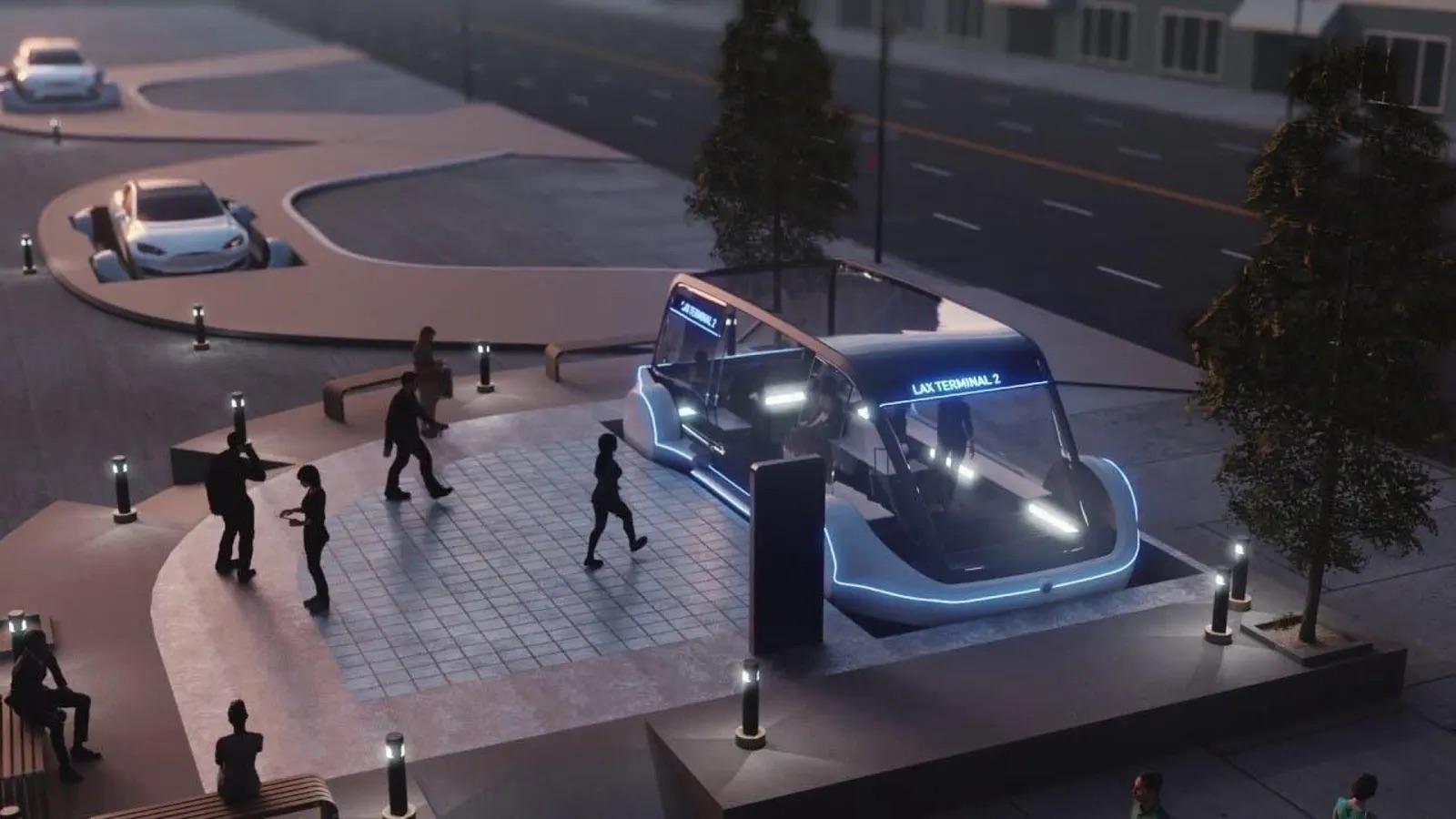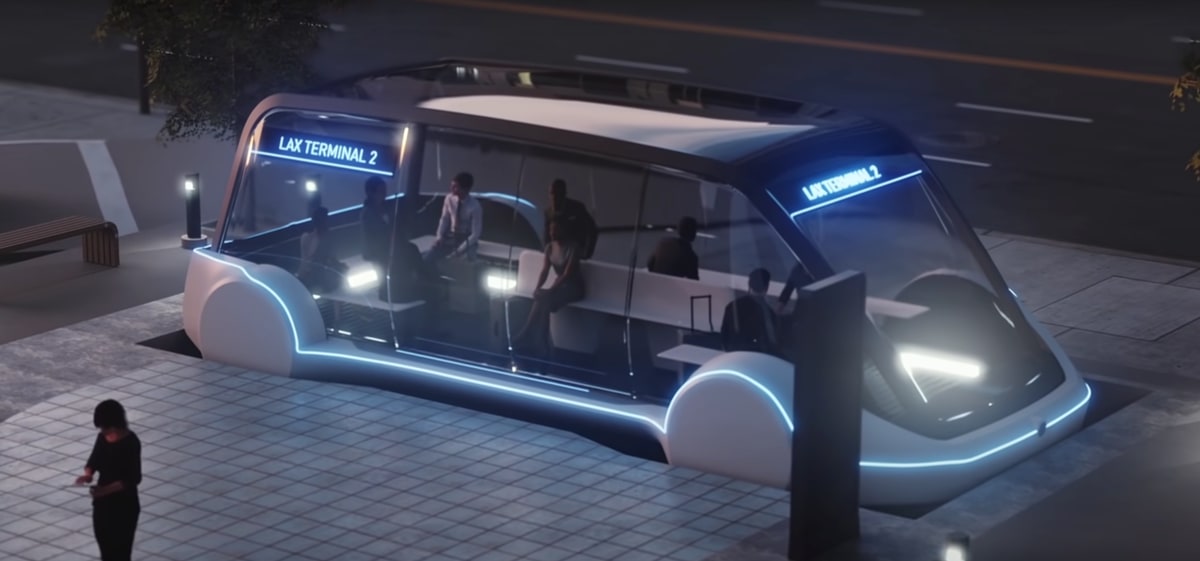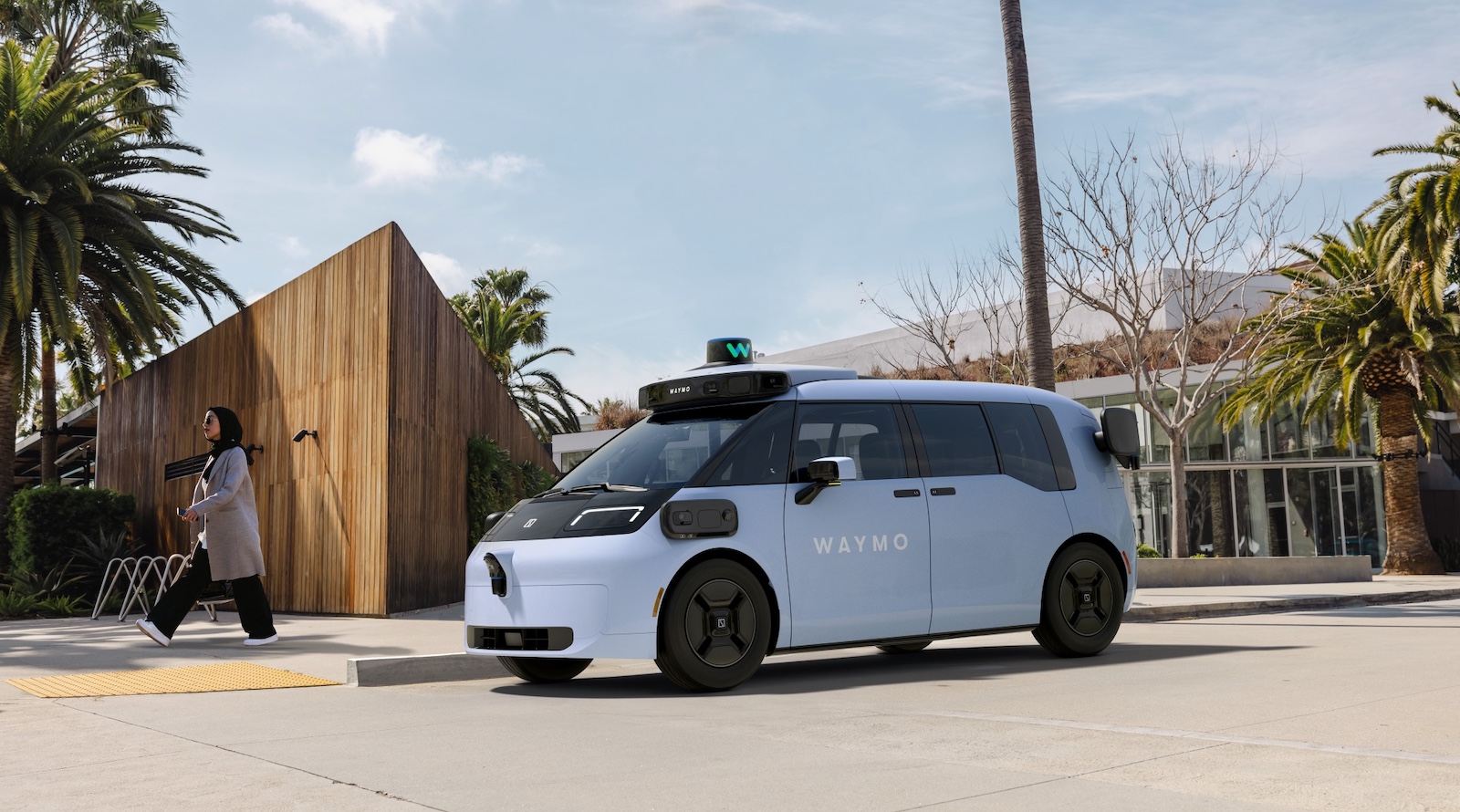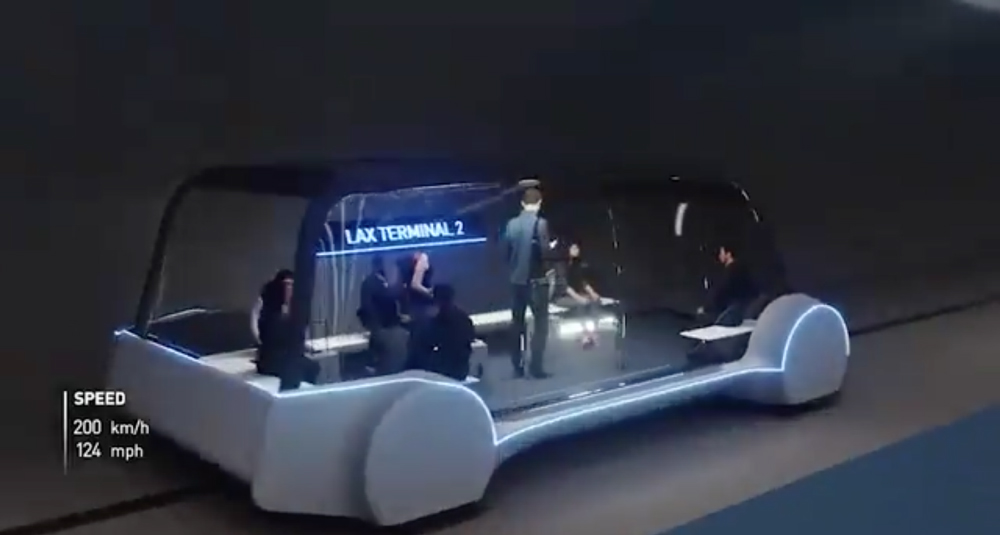A New Era in Transportation — Part 1
Support CleanTechnica's work through a Substack subscription or on Stripe.
I believe we are at the dawn of a new era in transportation due to recent advances in self-driving vehicles from several manufacturers, including Waymo and Tesla. The implications of this technology on the transportation sector, and on our lives, has been predicted to be transformational — so it is quite important to understand why this may be so. What are these projections, and what are they based on?
RethinkX suggested in their 2017 report Rethinking Transportation 2020–2030, that robotaxis, once on the market, would travel roughly 7× as much per year as a typical individually owned vehicle, and about 2× more than today’s taxis. The thinking was that since autonomous BEV taxis would become so cheap vs most other options, these vehicles would see a very high duty-cycle (more miles driven/yr) — driving down the cost of transportation. I found this to be an interesting suggestion since today’s taxis typically travel about 45,000 miles a year, and the average US driver puts on 13,500 miles, so I wondered about the math and assumptions behind the projection.
The RethinkX report also suggested the number of passenger miles/year would go up by about 50% by about 2030. The thinking was that a combination of natural year on year growth, plus cheap BEVs and Transportation as a Service (TAAS), would make travel very cheap. Access to cheaper travel would in turn result in people travelling more and new markets would open to better serve groups, including the disabled, elderly, etc.
The report also predicted the TAAS/BEV disruption would see US car sales drop from about 17 million/yr to about 5 million/year once TAAS is fully implemented. This would be a 3.3× drop in year-on-year vehicle production! If this projection holds worldwide, it means global vehicle production would drop from 90 million vehicle/year (current production) to just 27.3 million. The timeframe for this drop is anticipated to be about 10 years from when TAAS is implemented.
Clearly, this report assumes that a significant number of buyers would forgo ownership in favour of TAAS.
As a management consultant, I specialized in doing business analysis, industry projections, and cost of production math. At the time the RethinkX report came out, I just accepted it without knowing the math behind it since TAAS appeared to be years away, and I just couldn’t be bothered to look more closely at it. Times have changed, however, and TAAS now appears to be imminent, with Waymo, Tesla, and others making serious strides in this space. As such, I decided it was time to do my own research and math to determine the validity of the projections, and to see what the implications of this technology would be.
Due to the complexity of the subject matter, I broke this article up into a few parts — I hope you enjoy them.
RethinkX Assumptions

I started my research by looking into how RethinkX came up with their numbers, so I reached out to them to see if they could supply me with the back-end math or assumptions they used.
Unfortunately, the person I spoke with did not have that information. They did suggest the projection was largely based on the potential cost/duty cycle of BEVs/TAAS, but they did not have the detail of what went into the projection. They also mentioned their projections were supported by other industry analysis, including Tesla’s, which suggested in 2016 that a robotaxi would achieve a:
- 90,000 miles driven per year / vehicle
- 1-million-mile lifecycle
- Manufacturing cost of $25,000
- Cost to ride of under $1/mile
- Operational cost of under 18 cents/mile
As Yogi Berra famously said, “It is tough to make predictions, especially about the future.” The nature of predictions is that they are always based on incomplete information and human bias, so they are basically always wrong. The worst predictions are based on the writer’s personal experiences and their emotional opinions. These predictions are basically just “WAGs” (wild-ass guesses). If we are interested in figuring out something closer to reality, however, we can improve upon WAGs by leaning into facts, data, reason, context, behavior, and by considering the opinions and behavior of other people/groups, etc. The best predictions in this context are a little better, so we can call them “educated wild-ass guesses” … or EWAGS. These articles will try to make EWAG projections to answer the following questions.
Part 1
- Will TAAS disrupt the regular taxi market?
- Will Tesla’s TAAS system dominate, or will other robotaxi providers be able to compete?
- Will robotaxis displace privately owned vehicles? If so, how many?
- What will the automobile market look like once BEVs and TAAS are fully in place?
RethinkX/Tesla Assumptions
Let’s start by reviewing the key assumptions made for robotaxis to see if they are even plausible.
1. Robotaxis will be used 90,000 miles/year — Plausible
According to the 2019 “Global Taxi Benchmarking Study,” taxis today put on about 176 miles per day operating 10-hour shifts. If operated 360 days per year, these taxis could see 63,360 miles in a year, albeit 45,000 is more typical for a full-time taxi since drivers do not want to work 360 days per year. A robotaxi, however, can operate basically 24/7/365. If these taxis were in service for 20 hours/day (plus 4 hours of L2 charging), they could put on as much as 350 miles/day. This means a robotaxi could theoretically achieve more than 120,000 miles in a year! If so, the 90,000 miles/year (250 miles/day) projection used by RethinkX and Tesla should be quite easy to achieve.
2. 1-million-mile lifecycle — Plausible
The average car today only lasts about 165,000 miles and is in service for about 20 years. When these average cars are used as taxis, however, they do a bit better than this, lasting on average 200,000 miles. However, custom-designed taxis, like those from the London Taxi Company, are built to last much longer. These cars average approximately 300,000 miles over their lifetime, with some models reportedly achieving as much as 400,000 miles.
When it comes to BEVs, the data we have today appears to support the idea that they will last at least 50% longer compared to fossil fuel vehicles. For this reason, I will use 300,000 miles as the life-cycle benchmark for BEVs in this analysis — since if we are not there yet, we certainly will be soon.
This is still a long way from one million miles, however, so why am I suggesting one million is plausible? Here is the thinking:
- Many diesel semi trucks already achieve 1 million miles today with proper maintenance. Message: one-million-mile vehicles exist today.
- Jeffrey Dahn demonstrated how lithium-iron batteries can last 4 million miles and 50 years of service two years ago. Reinforcing this claim, CATL has recently launched it’s commercial “Tianxing Bus” battery, with close to a million-mile life.
- Commercial electric motors are a proven and mature technology that last for decades.
- Upcoming commercial electric robotaxis are being designed to last one million miles. As with semi trucks, when commercial vehicles are designed to last a million miles, they can.
3. Manufacturing cost at $25,000 — Plausible
I don’t think this point is controversial since we already have BEVs on the market in China being offered for less than $25,000. Considering the cost improvements we have seen for BEVs in the way of batteries, large castings, and new productions methods, a simple, light, $25,000 cab with 300+ miles of range should not be a problem at all.
4. Operational Costs of 18 cents/mile — Plausible
This one is a bit tougher to figure out, since the data can vary somewhat based on time and place. For example, the cost of electricity, insurance, repair & maintenance for very high-mileage EVs, etc. varies depending on the state you live in. For regular gas cars, an often-quoted number suggests the average privately owned car costs about $12,000/year to operate. Since the average driver puts on 13,500 miles/yr, this suggests this average gas car costs about 89 cents/mile. So, how can a robotaxi get to 18 cents/mile? Here is the math behind it:
- Vehicle Cost — A $25,000 vehicle driven for 1 million miles = 2.5 cents/mile (assuming zero residual value for the vehicle at end of life).
- Fuel — 25 kWh/100 miles and an electricity cost of 12 cents/kWh = 3 cents/mile. (Note: Electricity rates vary dramatically. I am using the 2022 EIA average commercial/transportation rate of 11.5–12.5 cents/kWh as a proxy. Actual rates may be even lower since most robotaxis will charge off-peak on commercial L2 chargers.)
- Repairs/Maintenance — According to the American Automobile Association (AAA), drivers in 2023 spent 9.83 cents/miles on maintenance, repairs, and tire replacement. A common estimate for BEVs is they cost ½ that of gas cars for this item. A reasonable guess therefore would be about 4.42 cents/mile.
- Insurance — The average driver spends about $2,300/year on insurance, and taxis often spend double this amount since they drive many more miles and require commercial insurance. If insurance is $5,000/year for taxis and the vehicle is driven 90,000 miles, the cost would be 5.56 cents/mile. This is likely too high an estimate, however, for robotaxis considering how they are estimated to be at least 10× safer than regular cars and they will be self-insured by the company making them. For this article, I’m going to use $2,300 for robotaxi insurance (2.5 cents/mile) as a conservative guess.
- Driver/Computer — A robotaxi will replace the cost of the driver with a computer and self-driving hardware. This cost may range from as low as $100/month, or it may be as high as $500/month, depending on how much profit the TAAS company wants to make. This figure is clearly an unknown, but the proposed range is a reasonable guess and is based on 3rd party estimates in the context of the cost of Tesla’s Full Self Driving (FSD) system and robotaxi estimates. If true, this cost would be somewhere between 1.3–6.7 cents/mile (this would give the TASS company between $13,320—$66,600 over the life of the vehicle). For this section, I’ll suggest $400/month (5.3 cents/mile), as this provides the company with a healthy profit and tons of margin to cover the cost of developing/maintaining their ride-sharing app. Total cost: 17.72 cents/mile.
Conclusion: A plausible cost per mile for a robotaxi is 18 cents/mile based on these assumptions and is very much in line with RethinkX’s and Tesla’s estimates.
The key savings over gas taxis comes from robotaxis’ long design life (1 million miles), their lower price vs today’s average taxis, the roughly 4× fuel savings of running electric vs gasoline, the 2× savings expected for maintenance/repair per mile, plus likely savings on commercial insurance. I should also point out that savvy BEV taxi fleets will likely construct their own commercial L2 charging stations — potentially making use of solar arrays and/or storage batteries. If so, these operators could lower their fleet charging costs to as little as 6–8 cents/kWh (1.5–2 cents/mile).
5. Cost to ride under $1.00 per mile — Plausible
It is important to note that an operational cost of 18 cents/mile likely results in an actual cost/ride of somewhere between 27 cents and 36 cents/mile. The reason is taxis are not always traveling loaded. This is a huge cost, in fact, since many taxi operators report a 50% (or less) loaded capacity rate. The fact is taxis drive empty when driving to pick up/find passengers. It would be reasonable to assume that a smarter dispatching system (made possible with very large taxi fleets) could reduce some of these unloaded miles. For this analysis, let’s use a range of 25%–50% empty miles. This raises the 18 cent/mile operating cost of the taxi to between 27–36 cents per loaded mile. At $1/mile charged to the customer, a 15-mile trip would therefore cost the customer $15.00, and the cost to the taxi operator would be between $4.05 and $5.40. This means the margin for the ride for the taxi fleet/operator would be somewhere between $9.60–$10.95. Not bad.
At this point, it is also important to note that the amount charged to the customer could be set much lower given these margins. If the TAAS provider charged just 50 cents/mile loaded ($7.50 per 15-mile trip), the profit on the ride would still be about 50%!

Summary
At this point I think it would be fair to suggest that the basic assumptions used by RethinkX and Tesla are reasonable. While I have no doubt these assumptions will prove to be wrong (with some areas projected too high and others probably too low), I believe they are reasonable and are close enough to prove the trend. Let’s see if we can now answer our first question.
Will robotaxis outcompete regular taxis?
Absolutely, and there is no question on this point. Here is why.
While there is a lot of variation depending on where you live, you can basically count on paying $3.50 for a regular taxi just to show up to get you. From there, you will pay about $3.20 per loaded mile plus about $30/hr in waiting charges if there is traffic. This means a 15-mile/30-minute taxi fare (a fairly average trip in the US) would cost about $55 in a regular taxi vs the $15 we projected for a robotaxi. There is no question users will prefer to pay $15.
But what if taxi fleets converted to the same million-mile BEVs used in the robotaxi example, with the only difference being a human driver?
In this scenario, the difference in operational cost of the taxi would simply be the difference between the cost of the driver vs the cost of the autonomous computer/hardware system. Taxi drivers cost about $20/hr, while a $400/month autonomous/TAAS system, if used 20 hrs/day × 30 days per month, costs just 67 cents/hr. We also know, based on American Automobile Association data, that a 15-mile ride typically takes 30 minutes. At a loaded rate of 50%, this means the true labour “cost” of that 30-minute ride is 1 hour. The human-driven taxi will need to charge $20 in labour, while the robotaxi will need to charge under $1 in computer “labour” — saving the customer $19 in labour for that average 15-mile ride.
Projection: The taxi market will flip to close to 100% robotaxis as quickly as they can be made/configured once certification is in place.
Analysis
According to the consultancy firm SCMO, there are about 18 million taxis in the world — albeit, I am not confident in this number as it may not include ride-share taxis, and it was difficult to find good information on this point. Regardless, this analysis suggests a lot of taxis and taxi drivers, perhaps 18 million, will be replaced by robotaxis.
Since robotaxis are predicted to last 5 times longer than current taxis, this also means 5× fewer cars will be needed to meet current taxi demand. If today’s taxis see 45,000 miles of use per year and have a lifecycle of 200,000 miles, these taxis would last about 4.44 years. Given the world’s fleet is about 18 million taxis, vehicle production to meet taxi demand is currently about 4 million vehicles per year. If robotaxis last 5× longer and are driven 90,000 miles/year, it means the taxi fleet can shrink to ½ it’s current size and robotaxis will last 11.11 years in service. This means vehicle production for this sector could drop from 4 million vehicles per year to just 810,000 vehicles. If this holds true, it means 3 million fewer vehicles will need to be manufactured/year!
Will Tesla dominate TAAS?

Maybe, but probably not as much as some people seem to predict. There is no question Tesla could dominate this space in the short term if their system is certified soon. That said, I believe other robotaxis will be able to compete long term and that these other networks will be able to secure significant market share. Here is why:
1. Vehicle Life — The projected 1-million-mile life cycle I am using in this analysis assumes the development of a simple, cheap robotaxi designed from scratch to achieve this extreme duty cycle. Tesla is currently the only company that is actively building an electric taxi from scratch to achieve this duty cycle in volume, but clearly others can do the same thing given enough time.
2. Vehicle & Autonomous System Cost — Will competitors be able to buy/make their taxis at a competitive price? Tesla plans to make their robotaxis in massive volumes (like matchbox cars) using the same assembly lines as their upcoming “Model 2.” Their vision to control cost is to use an unboxed production process, giga-castings, 48V ethernet wiring, steer-by-wire (STB) systems, plus their unique low-power/vision-based FSD system. The retail cost for these taxis is estimated at $25,000 for the car plus their cost of the FSD computer/hardware (est. $10,000) — so, about $35,000 for the vehicle plus FSD system.
Competitors today are using existing, lower-duty cycle vehicles and FSD systems that are estimated to cost between $100,000 and $150,000 for the vehicle, including their FSD hardware. This higher cost is likely just a short-term issue for competitors, however, as they will be able to develop their own simple, cheap, high-duty-cycle vehicles in the long run. If these companies can develop a competitive vehicle, the only difference in vehicle cost will be the cost of their slightly more expensive lidar-based systems. I’m going to suggest a fairly high WAG here that competitors will be able to come close with only a $10,000 premium per vehicle. We will see in a moment that this price difference is not material.
3. Operating Cost — Non-Tesla FSD systems require maps and are therefore geofenced. This means competitors will only be able to operate on pre-mapped routes. This fact not only limits where these taxis can operate, it also results in added costs to develop and maintain the maps. The added cost for this is currently unknown but will clearly be material. For this analysis, let’s make a relatively high WAG and assume the cost is 1.67 cents/mile (50 cents per 15-mile trip at that 50% duty-cycle).
Analysis
In the short term, I suspect Tesla’s robotaxi (Cybercab) competitors will be able to achieve a duty cycle of about 300,000 miles using existing BEVs, but that it will take a few years before they come out with their own million-mile vehicles. Likewise, the higher cost per vehicle Waymo et al will have in the short term will drop significantly to just the difference in hardware cost between the two different types of FSD systems.

If we accept these assumptions, the short-term vehicle/system cost for Waymo and other competitors for a $100,000/300,000-mile duty-cycle robotaxi would be about 35 cents/mile, compared to Tesla’s 3.5 cents for their $35,000/1-million-mile duty-cycle Cybercab. This is a 31.5 cent/mile advantage for Tesla for just the vehicle. At 50% loaded miles (as discussed earlier), this suggests a 15-mile trip in a non-Tesla robotaxi would cost $9.50 more in vehicle costs. This means competitors, in the short term, may need to charge almost $10/trip more than Tesla ($25 vs $15) — assuming, of course, the route is within the geofenced area for the taxi in the first place.
What about in the long term? It is very likely that other carmakers will respond, possibly quickly, by making their own simple, cheap, million-mile duty-cycle dedicated taxis as well. Once they do, the only difference in cost vs Cybercab will be the slightly higher vehicle/hardware and mapping costs as discussed. If mapping costs prove to be 1.67 cents/mile (admittedly a WAG), and the hardware/vehicle cost difference is just $10,000 (also a WAG), then the difference in cost between a Cybercab and a competitor’s robotaxi for a 15-mile trip is only about $1.00 ($16 vs $15). This of course is not a material difference and the main advantage for Tesla would just be its ability to drive anywhere without needing maps.
That said, I may be severely under-estimating the vehicle and mapping costs for these lidar-based robotaxis, as we simply do not have good data either way.
Summary / Implications
- We confirmed all RethinkX/Tesla assumptions. Specifically, robotaxis are likely to be in service 90,000 miles per year, they are likely to last 1 million miles, they will cost $25,000 or less to make, and they will be able to operate at a cost of 18 cents/mile or less.
- We also confirmed the cost of a robotaxi fare could prove to be just 50 cents to 1 dollar per mile. That said, fares are more likely to be much higher in the early years of TAAS due to high demand and limited competition.
- This analysis predicts robotaxis will replace about 18 million regular taxis and these taxi drivers will be out of a job.
- This analysis also supports that about 3 million fewer vehicles/year will need to be manufactured to meet today’s taxi demand.
- Tesla may prove to be a significant player in this sector if their robotaxi system can be made to work and it passes regulatory approvals. Either way, this analysis suggests competitors will be able to secure significant market share and will be able to compete with Tesla in the long run.
- The implications of this analysis suggest the overall impact on the transportation sector from robotaxis may prove to be far larger than just taxis.

While these conclusions are clearly material, it is important to note that the reason robotaxis are projected to be so massively disruptive is not just because of their ability to displace regular taxis, but because they have the potential to compete with privately owned vehicles and possibly even public transportation. If robotaxis displace some privately owned vehicles, as RethinkX and Tesla predict, far more robotaxis will be on our roads and the automotive manufacturing sector will shrink — possibly dramatically! RethinkX believes automotive manufacturing will shrink 3.3× in fact. The world currently produces about 90 million vehicles per year. A 3.3× reduction means the world will only need 27.3 million/year, and many of these vehicles will be robotaxis. If this prediction proves true, many automakers will not survive.
Part 2 of this series will explore the math and assumptions behind how RethinkX and Tesla came up with these projections, who (if any) would give up their vehicles, and whether these projections are plausible.
What do you think?
By Luvhrtz
Sign up for CleanTechnica's Weekly Substack for Zach and Scott's in-depth analyses and high level summaries, sign up for our daily newsletter, and follow us on Google News!
Have a tip for CleanTechnica? Want to advertise? Want to suggest a guest for our CleanTech Talk podcast? Contact us here.
Sign up for our daily newsletter for 15 new cleantech stories a day. Or sign up for our weekly one on top stories of the week if daily is too frequent.
CleanTechnica uses affiliate links. See our policy here.
CleanTechnica's Comment Policy

